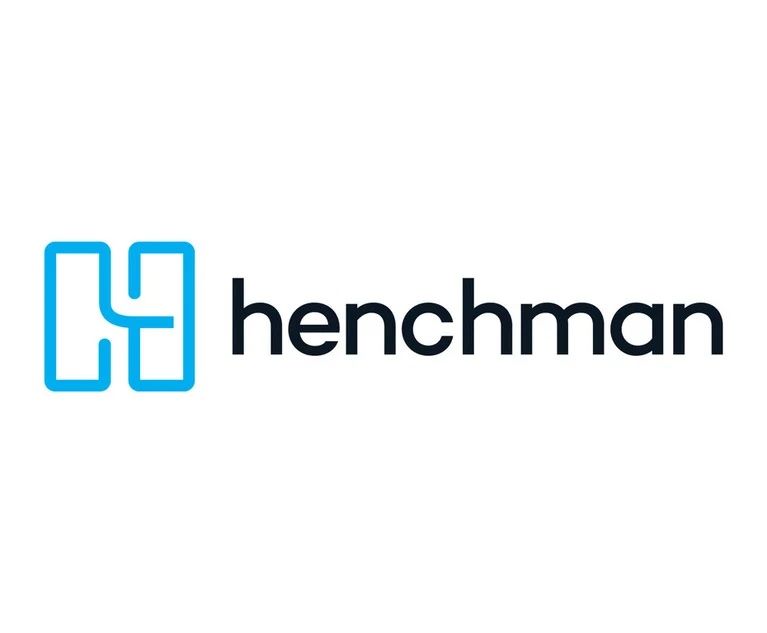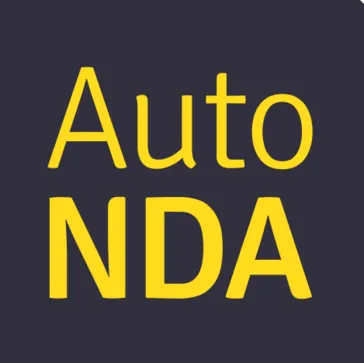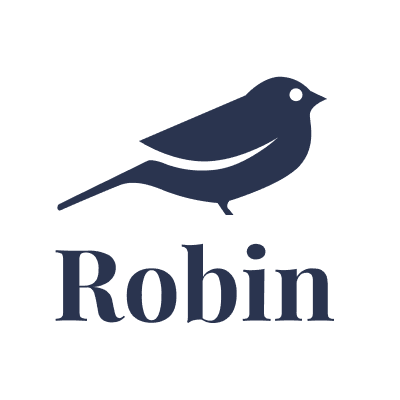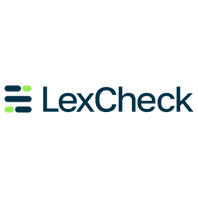Document Assembly: What It Is and How to Evaluate Competing Programs
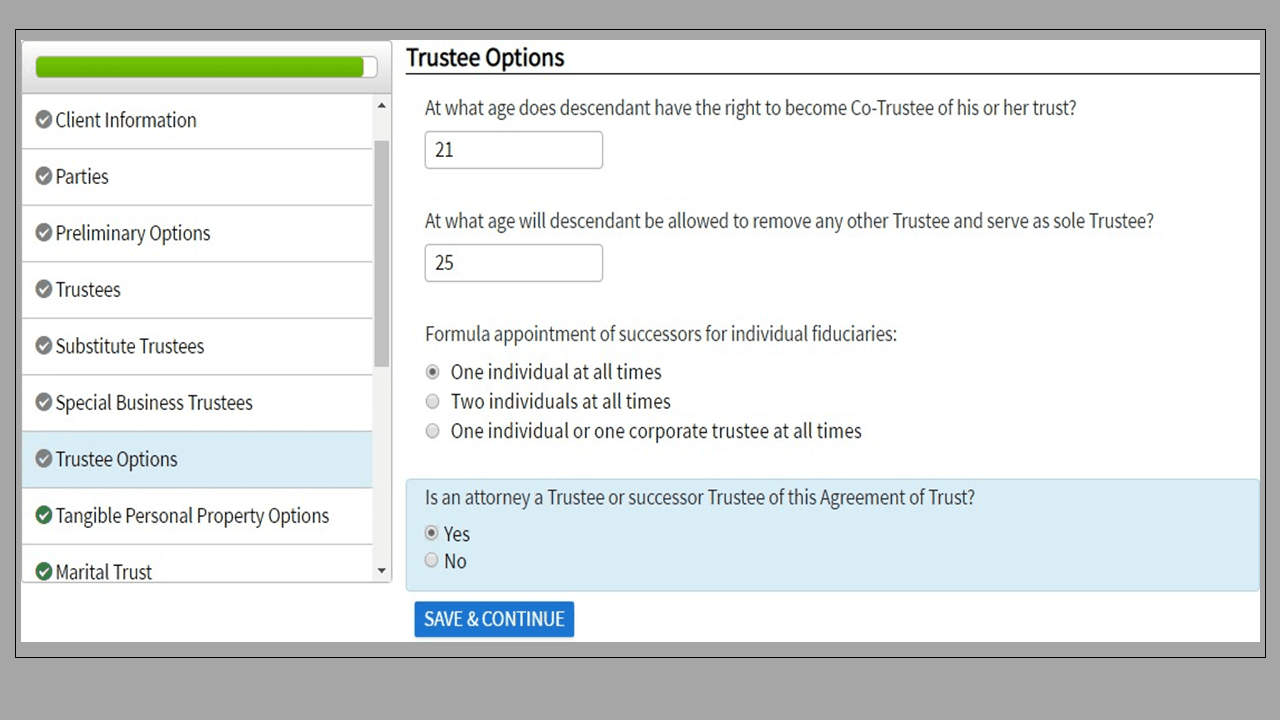
Most articles I have ever read about document assembly cover specific software applications and discuss their relative strengths and weaknesses. However, I’m specifically not making recommendations about any products in this article. Document assembly (hereafter referred to as “DA”) software functionality spans a wide spectrum, and there are many competitors, with new ones appearing every year.
I find that most people have heard of document assembly, understand vaguely that it helps one draft documents faster, and that’s usually it. So first I’ll briefly explain what DA systems are designed to do. Second (and most importantly), I want to provide a checklist of functional criteria to consider when evaluating options and comparing programs.
Like most legal tech categories, there’s no single DA product that is the best option for every situation (vendor claims to the contrary notwithstanding). If you are trying to figure this out for your practice, then I hope what follows helps make you a more informed consumer. It’s an important decision and expensive to choose incorrectly.
Finally, there’s the issue of executing a project once you have chosen a platform, and I have some advice on how to get your project to the finish line.
What I’m Not Discussing Here
There are numerous subscription-based drafting systems available for many practice areas. With most of them, you answer questions on the computer and the system quickly generates documents for you. However, the subscription system is providing the content and documents you’re generating. While you may be able to customize the underlying templates to some degree, and you can almost always tweak the documents once they are generated, the foundation of the system is someone else’s language.
By contrast, “pure” DA software requires that you provide the content because it is simply a tool for automating your own documents. In my experience, lawyers who try and reject subscription systems tend to do so because they just can’t swallow the phraseology being imposed upon them by the system. Anyway, this article does not address subscription-based systems with pre-built content.
There are also many matter/case management systems that offer various levels of DA functionality; and some even include content. However, those products exist primarily to solve practice management issues, and that’s an article for another time. In this case, I’m focusing on pure DA platforms that do not offer packaged content or matter management capabilities.
Problems with the Typical Drafting Method
Lawyers often recycle old documents into new ones. In other words, they draft new documents by starting with an existing document from a previous matter or transaction. The existing document is found, renamed, and modified to work for the present engagement.
While obviously better than starting from a blank page, this approach has significant drawbacks. Finding the document can be time consuming; and sometimes you never find what you're looking for. If you do find a similar existing document, the word processor's find-and-replace function rarely catches everything. It is also very easy to omit provisions or text missing from your original document.
Even if you remember what to add, pulling text from other instruments or crafting new language is inherently slow. Another common error is leaving in a provision which should have been removed. How many times have you read an instrument containing language that seems completely irrelevant to the transaction or matter at hand? The worst problem with this approach is that many starting-point documents were previously negotiated with opposing counsel.
Unless you have a photographic memory, remembering all of the little compromises made while negotiating the prior matter is nearly impossible; and each one can be a landmine for your current client.
A structural drawback to basing new documents upon old ones is that many practitioners do not return to the same template every time. Instead, they keep using the last one they drafted. The problem is that since the starting point is a moving target, there’s no consistent base document which can be updated and improved over time. There’s nowhere to store (for future use) custom provisions drafted for less common fact-pattern wrinkles. Finally, whether this approach is fast really depends upon what you compare it to. It is unquestionably faster than starting a new document from scratch, but it is also much slower than incorporating DA technology into the process.
Document Assembly Defined
On the most basic level, document assembly is the use of software to (very) quickly generate customized Microsoft Word or Corel WordPerfect documents. In other words, document assembly adds significant functionality to your existing word processor. It allows you to capture the consistencies in your documents, such as which sections, paragraphs, sentences, and words go where under any set of facts. It also allows you to capture the irregularities in your documents. Irregularities include custom provisions and intelligent language building that can accurately consider thousands of inputs to produce the correct phraseology every time.
Instead of cut and paste, you can pick desired options or alternatives from a list or interview. Instead of manually replacing [Testator name] with your client’s name 25 times, you simply respond to on-screen questions and let the computer do the clerical work. Users must only answer questions in an interview/questionnaire to produce letter-perfect, completely customized documents. Neither word processing nor computer skills are required to use such a system once it is built. Even technophobe, two-finger typists can produce perfectly formatted, complex documents without assistance. For example, an interview screen may look like the following:

Properly deployed, DA technology can exponentially decrease drafting time and increase accuracy. For example, it would be normal for a DA system to compress what normally takes eight hours of drafting time into 15 or 20 minutes. DA systems can be used as teaching tools, shared with others, and textually updated as necessary. If your practice involves generating complex documents (or a set of documents is the ultimate deliverable), then DA can dramatically boost profitability and/or decrease costs.
Consider Issues Beyond Document Assembly
If a process is broken or the wrong person is in the wrong seat, it’s possible to significantly reduce drafting time and still experience little or no overall efficiency gain. Drafting obviously doesn’t occur in a vacuum. So my advice is to examine people, processes and technology at the same time. They’re all related, and you probably won’t get far if you ignore any of the three areas.
The Players
There are more than this, but the following is a short list of competing programs in this area: ActiveDocs, Aurora, Contract Express, (Bighand) Create, Docassemble, Docmosis, Documate, Doxserá, Draftonce, Formstack Documents, Forte, HotDocs, Innova, Lawyaw, Leaflet, Pathagoras, Rapidocs, Templafy, TheFormTool Pro, Woodpecker, XpressDox, and ZumeForms. For any omissions, I apologize (there are new ones released seemingly monthly).
To reiterate, I’m not evaluating any of them against others. My goal is to provide you with the information by which you can decide which of them would be the best fit for your office. These programs tend to improve over time, so if you looked at any of them in the past and were dissatisfied, you may be surprised at what the same platform is capable of today.
When Document Assembly Is Appropriate
Everything from simple letters to the most complex documents a firm could generate can be automated. The only types of documents which cannot be automated are those which are drafted from whole cloth using no existing language, clauses or forms.
I’ve found that many people feel DA is appropriate only when you have simple, fill-in-the-blank forms which are generated in high volume. While any DA platform can handle that type of thing, they really shine (and provide return-on-investment) when they’re used to generate extremely time-consuming documents which are frequently required.
For example, an estate planning lawyer may often produce revocable trusts, and each one takes quite a bit of time to complete. If a lawyer only needs to fill in blanks, then the word processor may be all that is required and DA would be overkill. For example, Microsoft Word has many tools for basic automation including AutoText, macros, mail merge and content controls.
Functional Selection Criteria
As previously mentioned, I want to provide a list of functional criteria you can use to evaluate alternative programs. This is not a comprehensive list of every possible thing DA can do. Instead, these are what I view to be the most important considerations (listed in random order because what is very important for one lawyer may be irrelevant to another). For purposes of this discussion, I’m going to refer to any data input screen or interview involved in the assembly process as a “Questionnaire.”
Static or Dynamic Questionnaire
Some platforms present a set of questions which cannot be changed or concealed, even if a question is irrelevant based upon how previous questions were answered. For simple documents, this may not be a problem. However, the more complex the decision tree involved, the better it is to have a dynamic interview that automatically changes and updates itself based upon how prior questions were answered. This reduces the margin for error and also makes it easier to combine similar documents into a single template.
For example, if an estate planning lawyer has seven revocable trust templates (based upon fact-pattern variations), the objective should be to create a single automated revocable trust template which combines all seven variants. This makes ongoing administration of the system easier because there’s only one template per type of instrument, and the common language is present only once. Imagine how confusing it would be to generate a trust from a system where you had to evaluate the relevance of every single question/input that might be necessary to generate any of seven different types of trusts.
Ability to Store and Re-use Questionnaire Answers
During the course of a case or engagement, you may generate multiple documents from many different templates. It’s generally not acceptable that you would have to re-enter the same information each time. Therefore, it’s important that you can save your responses to the questions in the questionnaire for future use. You would probably also want the ability to add new information to an existing set of answers, or change a previous response and save it. Many DA platforms allow this and if it’s an offered feature, it should be easy and logical to use.
Ability To Pull Information from Databases Into The Questionnaire Or Document Directly
For example, you may require the ability to connect to an external database and pull previously entered information into your questionnaire. The database may be a matter management system, Outlook, an Access or SQL database, or anything else. The goal would be to avoid any redundant data entry.
Ability To Add Help Text in The Questionnaire
If you intend to use your DA system as a teaching tool or simply want the ability to present users with additional help or factors to consider when responding to a question, then you need the ability to provide question-specific help text.
Ability To Generate Multiple Documents from One Questionnaire
You may often generate a set of documents that use the same information in various ways. Further, you may want the end result to be one word processor file comprised of each component document in succession; or you may want each component document to be generated and saved as a separate word processor file. I personally prefer separate documents, but make sure the platform you’re evaluating can generate multiple documents at once, and that the result is your preferred arrangement (one big file comprised of multiple documents or each document produced as a separate file).
Flexibility Regarding Types of Questions (Data Types) Presented
When gathering the information necessary to generate a document, a system should offer options for the following types of inputs: true/false, multiple choice, text, date and number. True/false questions present Yes or No options. Multiple choice questions should allow options for selecting only one or all-that-apply. If only one answer can be selected, you may also want the option to choose “other” wherein the user types whatever they want. If all-that-apply is selected, then the template should have the ability to punctuate the list of items checked, and you may require the ability for the template to count how many items were selected which would control other language.
For example, a template questionnaire may ask which utilities will be paid for by the tenant via multiple choice. If one utility is selected, the sentence may begin “The Tenant will pay for the following utility…” but if more than one is selected, it would need to begin “The Tenant will pay for the following utilities…” Finally, you may want the ability to add a “none of the above” option for an all-that-apply multiple choice. You may need the ability to set minimum or maximums on number variables. You may need the ability to automatically format dates a certain way when inserted into the document, regardless of the way the user entered it.
The point is that the questionnaire is very important to the process. You want maximum flexibility regarding the presentation of the questions and the ways in which you can use the responses to control language in the document.
Ability to Calculate Results
For most types of documents, it would be nice if the platform had the ability to calculate text, dates or numbers based upon previous inputs. With this functionality, if the answer to a subsequent question could be calculated or inferred based upon prior responses, then the questionnaire wouldn’t need to ask the question at all.
For example, identifying a party as male could automatically calculate and insert the he/his/him pronouns without separately asking those questions. If you enter the term, principal amount and interest rate for a promissory note, then it could automatically calculate (and round) the payment amount. If you provided the commencement date, it would be able to calculate the maturity date based upon the term.
Some DA platforms have the ability to calculate almost anything you can think of based upon inputs. The more sophisticated this capability (if it exists), the faster you’ll be able to assemble complex documents and the less margin for error you’ll have to deal with. I view this capability as essential for most documents.
Ability to Handle Conditional Logic
Ideally, you would have the ability to include or exclude any text based upon single or multiple conditions (sometimes referred to as business rules). For example, a provision may be included (or not) based upon the response to a single true/false variable such as “Include guardianship provisions?” Another provision may be included or excluded based upon the response to a multiple choice such as “Type of will: Simple Pour-over.” Still other provisions might be included based upon a compound test such as a) the client is married, b) it’s a pour-over will, and c) the client’s spouse is appointed as initial or successor Executor. Finally, text may be conditional based upon a calculated result such as if the number of Co- Trustees entered is greater than 2.
The ability to conditionally include text based upon simple or complex tests is typically required for automating reasonably complicated documents. This functionality also allows you to present users with a laundry list of possible clauses to include. For example, see the following screen shot:

Finally, you will likely need the ability to handle nested logic which is sub-logic contained within larger, optional segments of the document. For example, you may have conditional logic surrounding a Guardianship provision in a will. If it is included, then you may have versions of the language for sole guardians or co-guardians which need to be conditionally included based upon the number of initial guardians entered. Further, if co-guardians are appointed, there may be optional language for what happens if one of the co-guardians is unable to serve. For example, the text will be different if the remaining co-guardian can serve alone, or if a new guardian must be immediately appointed to replace the one unable to serve (so there are always co-guardians).
Ability To Gather and Process Lists/Repeats
Nearly all legal documents have parties and, in most, the possibility exists that you may have more than one. Lists or repeats provide the ability of the platform to allow a user to enter an unlimited number of records (grantors, grantees, buyers, sellers, executors, assets, debts, shareholders, etc.).
Furthermore, you probably want the ability to calculate things based upon the number of records entered. For example, if you’re automating an estate planning document, you’ll need to be able to enter lists of children (possibly), Executors/PRs, beneficiaries, guardians, and trustees. Take children, for example. A highly evolved list function would allow you to enter an unlimited number of children. For each child, you might provide the name, gender, date of birth, and whose child it is (in the case of a married client, a child from a prior relationship or a child of the marriage). From that, you would be able to automatically pull out the list of minors or adults (based on date of birth), the pronouns would all calculate correctly (based on the gender answer), and you would be able to extract separate lists of stepchildren or children of the marriage. Further, the list would be able to automatically count the number of children entered so that it could correctly produce language such as “children are” or “child is.”
Depending upon the complexity your documents require, you may also want the ability to have nested lists. In other words, lists within lists. For example, assume you have a deed template and you would like the ability for it to handle multiple grantors. Those grantors may be any combination of individuals, married couples, entities or trustees. Further, you may have a limited liability company as grantor and want the ability to have multiple signatories on behalf of any entity grantor (that would be a nested list). In fact, you might have an LLC grantor and signing on behalf of the LLC is a corporation as managing member, and signing on behalf of the corporation are multiple officers. That would be a parent list plus two nested lists, one within the other.
Imagine if you had a deed template that could handle any number of grantors and grantees, and also any number of signatories on behalf of the grantors up to four levels deep. Such a template would be able to produce a punctuated list of grantors, plus the appropriate signature lines and acknowledgments, no matter how byzantine the grantor corporate structure might be. In any event, the ability to gather, process, sort, filter and punctuate lists is necessary in most legal instruments, but not all DA platforms offer this capability. This is another capability I view as essential.
Ability To Complete PDF Forms
Every platform should be able to produce documents which can be opened in Word. However, you may need the ability to also complete PDF forms. By that, I mean check the appropriate boxes and fill in the blanks based upon how questions were answered in the Questionnaire. Several platforms provide this functionality.
Ability To Handle Inserted Templates
For example, assume you need to build 50 templates for various types of pleadings. The caption, signature blocks and certificate of service may be common across all of them. It would be very handy if you could make sub-templates for those items which are simply inserted into the parent templates in the appropriate places. In that manner, editing the one signature block sub-template would automatically update all 50 templates into which it was inserted.
Familiarity With Template Development Environment
For example, if your office uses Word, then you probably want to choose a platform that allows you to create templates in that environment. If the platform uses its own word processor for template creation, that can be a negative because it may not possess Word’s best functionality. Worse, there is always the possibility that your formatting will go sideways if a document created in another platform is opened in Word.
Cloud, Desktop or Both
Some platforms are locally-installed software and that’s the only option. Those tend to only work on Windows computers. If you have remote users who will not be connected to the same network or you’re using Macs, then you’ll probably be more interested in a platform that is web-based.
If Desktop Software – Windows or Mac Issue
If you prefer locally-installed software over cloud/web-based platforms, then you want to make sure the platform you choose will install on computers running your preferred operating system.
Ability To Gather Data from Others
If your practice area requires that you gather data from clients or others within your organization in order to draft documents for them, it would be beneficial if you didn’t have to write down that information once and then re-enter it into your DA system. In the perfect world, you could present your clients or colleagues with a questionnaire and flow that information directly into your DA system. Of course, this assumes that the platform would allow you to add additional information since there will typically be required questions that only you should answer as the subject matter expert.
Ability To Preview the Document During Assembly
Some platforms allow you to see the text of your document being assembled as you respond to the questionnaire in real time. Of course this is helpful when generating documents, but it’s arguably even more helpful when you are testing the template during construction to make sure it produces the language you want under varying fact patterns.
Longevity Of the Vendor
If you select a web-based platform and the vendor ends up out of business, you could lose access to your templates. This is less of a risk with locally-installed software. Of course, even established technology companies can go under; and there’s no guarantee that past history will equate to future longevity. Further, you never know if an established player will be acquired by another company.
Acquisitions in the legal technology space can have unhappy endings for users of the acquired software. The point is to do your homework and find out as much as you can about the vendors under consideration. You want to know how long have they been in business, how big the installed base is, how established they are in the market, how many employees they have overall and how many are involved in technical support.
Technical Support and Training
It is becoming unusual if a software vendor offers any kind of a traditional, printed (or printable) how-to manual. Learning how to use the platform is obviously key to a successful project. Make sure you explore all options to see what is available (such as on-demand videos, live training, or written manuals). Some vendors include “how to” help with their technical support, and some only cover installation issues. You will want to know the answer to that question up front. It may also be worth calling a vendor’s technical support number during normal business hours and see if you can get through to anyone.
Who Should Automate Your Own Templates?
Many of the platform vendors position their products as do-it-yourself. In other words, they expect that lawyers will automate their own templates. In my long experience, that often results in projects never reaching the finish line, or the project gets completed but the users are never happy with its functionality and performance. I’m not asserting that you can’t automate your own templates, but just because you can doesn’t mean you should. All or most of the platforms either offer to automate templates for you, or they have a network of outside firms they can refer you to for that task. Here are the considerations to think about before deciding how to approach it:
Are You A Microsoft Word Expert?
I can tell you with absolutely certainty that only a tiny percentage of legal users have full mastery of Word. Any good DA platform can fill in blanks, calculate results, punctuate lists and conditionally include or exclude text. If your underlying Word template isn’t set up correctly with styles, automatic paragraph numbering and Word’s other advanced functionality, then you’re very likely to have formatting messes in every document you generate. On the other hand, if the underlying Word structure is solid, you can avoid all formatting glitches in the resulting documents.
How Much Time Can You Allocate to The Process?
Depending upon the complexity of what you’re automating, this can be an extremely time-consuming process. If you want to do it yourself, you’re going to need to carve out a lot of regularly-scheduled time to work on the templates. Any seasoned template developer will tell you that the longer you leave a partially completed template alone, the harder it is to return to it and figure out where you were and what is next. If you think you’re going to fit template automation in between other things, you’re probably never going to finish anything unless you often have nothing else to do. In fact, many law offices that have the greatest success automating documents internally assign someone part or full time to the process.
Are You Good at Documenting Decision Processes?
Most lawyers have never thought to write down every question that must be asked and answered to get exactly the document they want under changing circumstances. It’s a mental exercise that has never been reduced to writing. However, that’s exactly what is required for template automation. In my experience, some people are good at building out complex decision trees. It’s intuitive, logical and fairly easy for them. However, a many people struggle with that kind of thing and they find it to be frustrating. If you like solving puzzles, then you’ll probably love automating templates because figuring all the ways language can be disassembled and reassembled to address factual variance is similar to solving puzzles. If you find that kind of thing to be unpleasant, then you will probably dislike template automation.
Do You Have Programming Experience?
If you have very complex documents and choose a platform that can handle that complexity, then the tool is necessarily sophisticated and feature-rich. The best ones out there can machine out any language you want based upon any inputs; and a software tool that can do anything you can think of is necessarily complicated. Despite what many of the vendors claim, it’s often not an “anyone can do this” proposition. Programming experience definitely helps.
Conclusion
Document assembly has had a big impact on the legal world, and it is arguably one of the most disruptive technologies of the last 25 years. If you are in the business of producing complex documents, then DA should be on your radar.
It is difficult to improve a process reliant upon recycling old documents into new ones. Even if you never take the step into document assembly, creating consistent starting-point documents to use as templates is never wasted effort. You can substantially improve a manual drafting process by creating plain templates with changeable and optional text identified; and doing so is a necessary precursor to automation should you choose that route.
If you decide to venture into DA, the right platform for you is primarily determined by the functional criteria your documents require, and whether you intend to do it yourself or outsource it. Getting to the finish line with a DA project is almost never a walk in the park; but the payoff can be huge.
©2022 Affinity Consulting Group LLC

